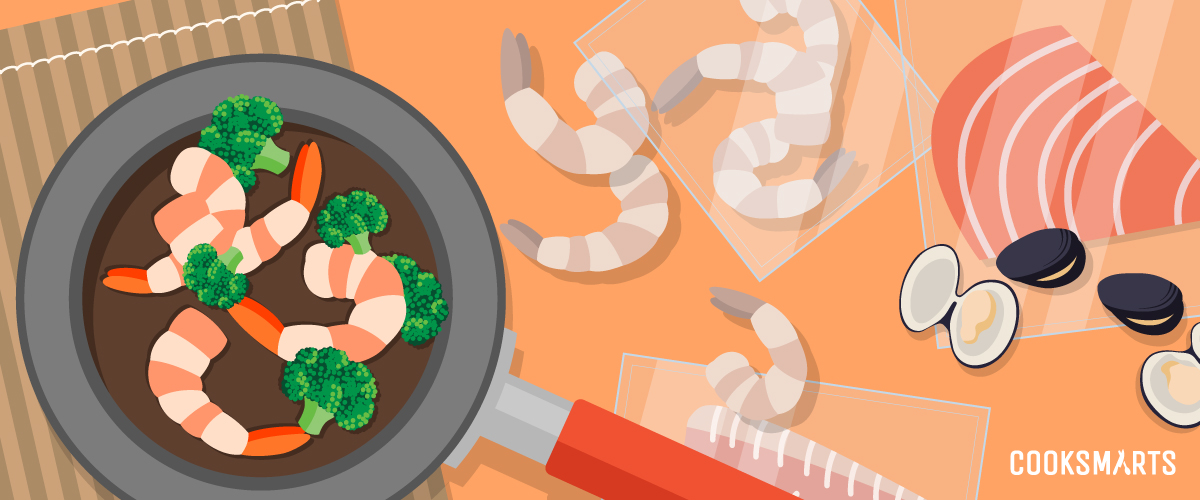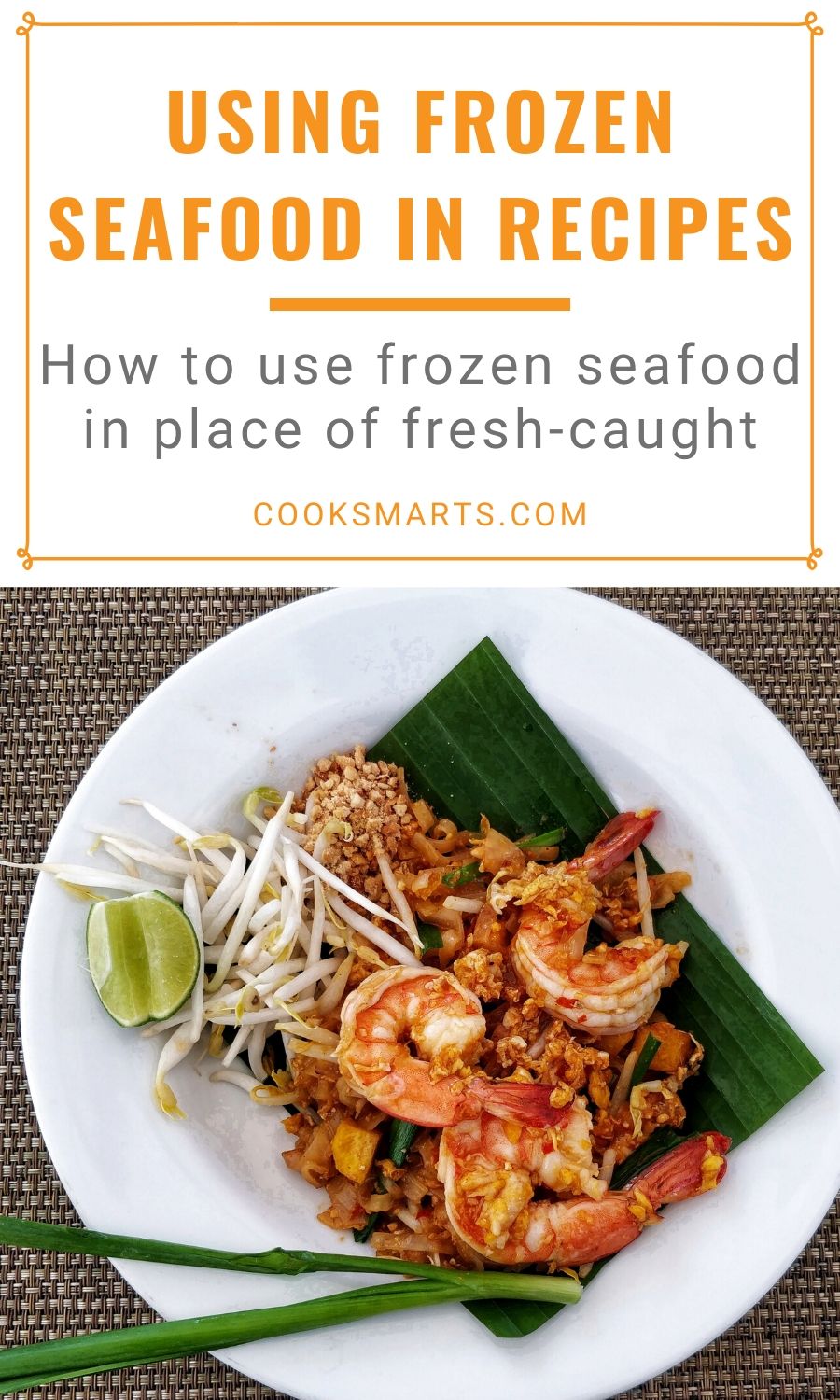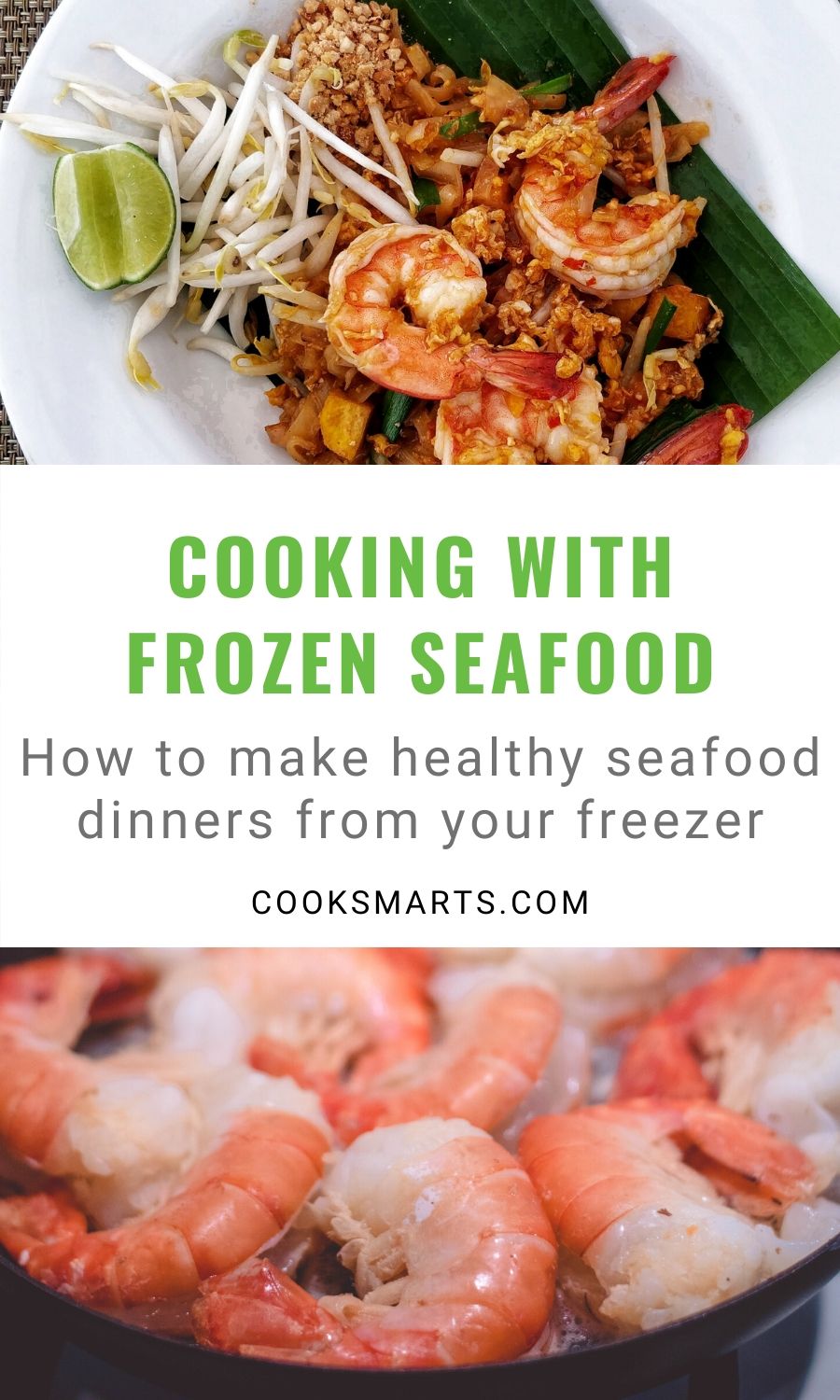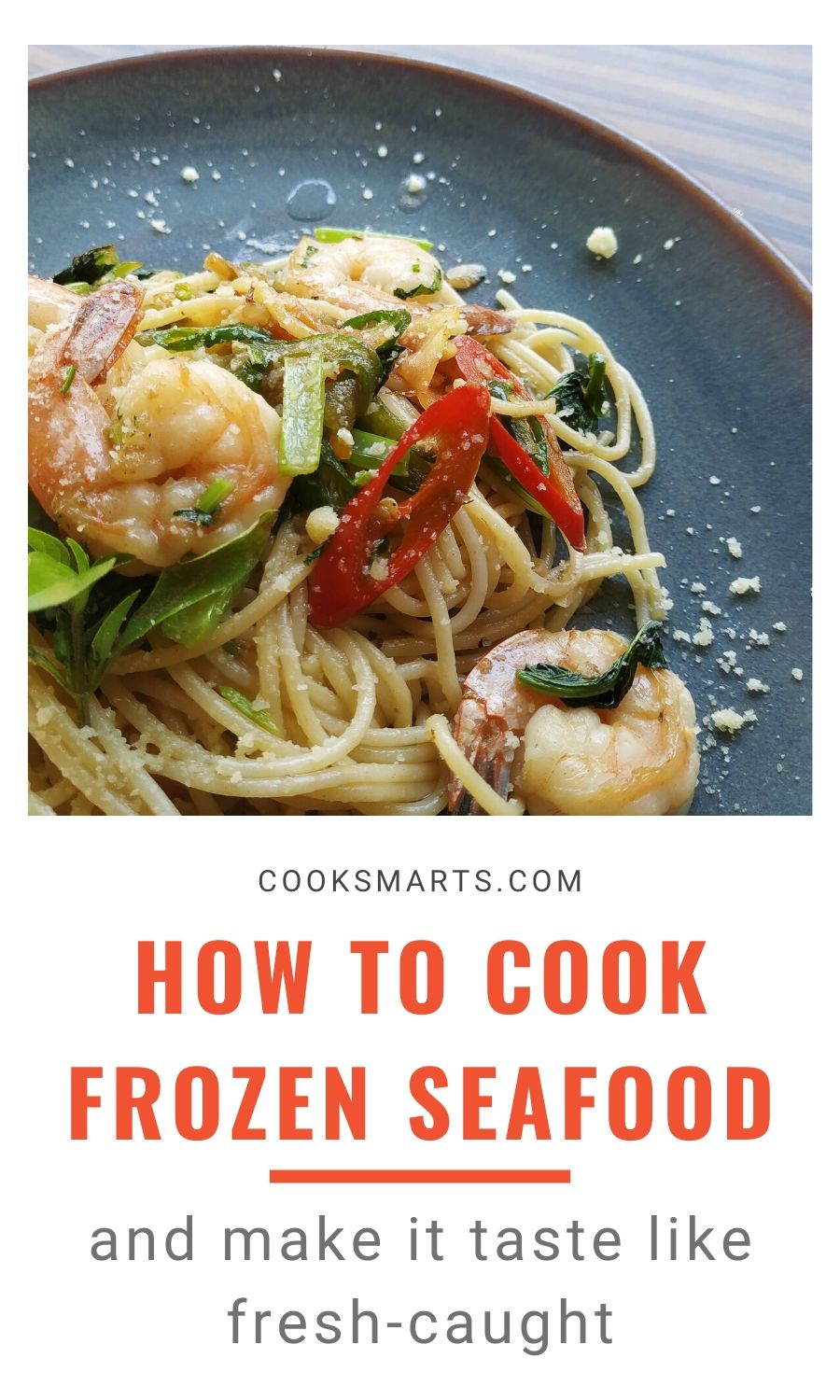How to Use Frozen Seafood
How do I thaw frozen fish? Can I cook shrimp from frozen? Will it come out as well as fresh? If you’re unsure how to cook frozen seafood, you’re not alone — but stick with us and you’ll be a pro in no time!
Here at Cook Smarts, we’re finding that chicken is harder to come by these days, while the frozen seafood section of grocery stores remains relatively well-stocked. That may be because it’s not always obvious how to use frozen fish, mussels, clams, and shrimp in meals. Plus, get it wrong and you can wind up with a chewy, rubbery dish you won’t want to eat.
Luckily, however, cooking with frozen seafood is not as intimidating as it might seem — and with a few tips under your belt, you can cook some incredible meals from frozen! Read on for our very best advice for making seafood meals you couldn’t tell were ever frozen. Now is the time to try new things and get creative in the kitchen, and who knows — you just might find that your new favorite meal starts in the frozen seafood section.

What to Look For
The truth is, it’s very common for seafood to be frozen at some point along its journey to your plate. So even if you’re buying fresh from the seafood counter, that’s no guarantee it wasn’t previously frozen. And that’s not necessarily a bad thing: Seafood that’s frozen while still on the boat will be fresher than seafood that’s taken a few days to reach you under refrigeration.
The important thing to look for, though, is seafood that hasn’t been refrozen once it’s thawed. So how can you tell? Refrozen seafood tends to have more ice crystals on it, so look for pieces that are frozen solid with minimal surface ice. Keep them frozen in the coldest part of your freezer until you’re ready to use them.
And as always, quality matters. Just like how you can buy very cheap or very expensive fresh fish that will vary greatly in quality, the same is true for frozen, so be aware that starting with low-quality ingredients will never get you a great end result. Also, any seafood that’s been in the freezer longer than six months should be discarded.
How to Thaw Frozen Seafood
For most recipes, you’ll thaw frozen seafood, then cook it just the same as if it had never been frozen. For a hands-off method, simply move the seafood to your fridge the day before you’re ready to cook — 24 hours is ideal. If there are several pieces frozen together, you may need to pry them apart after a few hours to ensure an even thaw. Also be aware that some liquid will seep out as the seafood thaws, so if it’s not already stored in a sealed bag or storage container, it’s a good idea to put it in one to prevent ruining other food in your fridge (not to mention creating a smelly mess!).
But what if mealtime is coming up and you forgot to thaw your seafood? Never fear — you still have two options. The first is to thaw your seafood in cool water. (Though you might be tempted to speed up the process by using warm water, this increases the risk of growing harmful bacteria.) A running faucet isn’t necessary; just change the water every half hour until it’s thawed, and make sure the seafood is in a leak-proof bag to prevent bacteria from being introduced to the ingredient. Once the seafood is fully thawed, cook immediately.
The last option for thawing seafood is, believe it or not, the microwave! Yes, you may have sworn never to do this after your officemate reheated fish in the microwave and stunk up the place for days, but microwave thawing is a perfectly acceptable way to go. Most microwaves have a defrost setting specific to fish or seafood. Just be sure not to leave it in too long so that the protein starts to cook!
Cooking from Frozen
The other option for cooking with frozen seafood is to simply start cooking it without thawing. This is common for shrimp and calamari, but works just as well for fish fillets. Rinse the seafood to get rid of any surface ice, then pat it dry with a paper towel and cook it as you would from fresh. A good rule of thumb is to increase the cooking time by about 50% to be sure it cooks all the way through. You can bake it, steam it, poach it, grill it, broil it, sear it, or sauté it and it should come out great!
Improve Your End Result
Ultimately, seafood that started out frozen will likely let off a little more water in the cooking process than never-frozen seafood, so don’t expect a crisp skin on your salmon, for instance. Soups, curries, and any method that involves steaming, cooking in parchment, or boiling the seafood will likely come out just the same as starting from fresh, but otherwise you may want to coat seafood in cornstarch before cooking to retain moisture and get a crisper surface.
Know When It’s Done
The reason so much frozen seafood gets tough is that people tend to overcook it. It’ll shrink as it cooks, and if you keep cooking it, it’ll keep shrinking, pushing out moisture in the process. So check your seafood frequently as it cooks, and stop it as soon as it’s cooked through (or sooner, for rare fish).
Fish is done when it flakes with a fork and loses its translucent appearance, which corresponds with an internal temperature of 140 to 145 degrees, if you have a temperature probe. Shrimp, crab, and lobster become opaque with a slightly pearly appearance. And any seafood that comes in a shell, such as clams, mussels, or oysters, are done when their shells open up; discard any whose shells stay shut. Some bivalves are frozen without the shell, so in this case watch for them to plump up and turn opaque — and of course, follow any directions on the package regarding specific cook times.
Substituting Seafood in Meat Recipes
If you’ve been dying to make your favorite chicken meal but can only find fish, no need to wait until chicken is more available! You can often use fish instead. Your best bet is to get a firmer fish, such as cod or halibut, and use it in recipes that call for chicken breast, not thighs or drumsticks. Salmon, cod, or halibut can be subbed for pork chops as well, and tuna can be used in place of steak. Check your fish frequently, as fish tends to cook faster than chicken, pork, or steak would, and don’t marinate it for as long, either — fish should marinate for between 20 minutes and two hours. Of course, some recipes will do better than others with substitutions, but if it sounds good to you, try it out!
And if you’re substituting seafood for other seafood, well, the world is your oyster, salmon, shrimp, tuna, clam, or mussel! Check out our Cooking Substitutions guide for the specifics, but many types of fish can be easily subbed for one another, and many shellfish and bivalves can be swapped too.
Guide to Ingredient Substitutions for Meat Cuts & Seafood
Learn about the best substitution for any type of common meat, poultry, or seafood with this infographic guide!
Recipe Inspiration
Ready to try your hand at cooking the seafood in your freezer? Here are a few of our favorite recipes:
- Shrimp and Sausage Gumbo, a hearty, spicy single-pan meal for when you’re craving the Bayou but are stuck at home.
- Asian Fish Tacos are a little crunchy, a little tangy, and totally delicious!
- Sheet Pan Greek Salmon is baked with crispy potatoes and topped with a flavorful olive and bell pepper tapenade.
- Mustard Roasted Fish, a citrusy fillet served over lentils with peas and spinach, and finished with mustard creme fraiche.
- Mussels and Chorizo, cooked in stock and wine, are perfect with a slice of crusty baguette.
- Salmon-Basil Burgers are crisp on the outside and topped with a tangy balsamic aioli for a craveable twist on the classic burger.
Get more helpful cooking tips and resources by signing up for our newsletter below. We send out weekly emails that will help you improve in the kitchen and live a healthier life, so join our community today and start cooking smarter!



